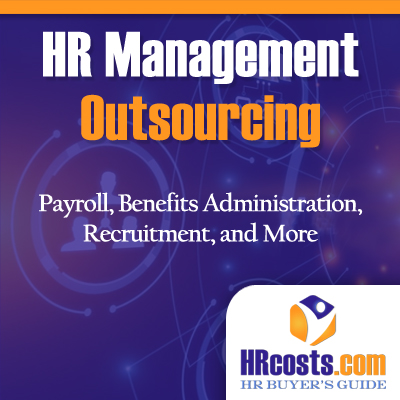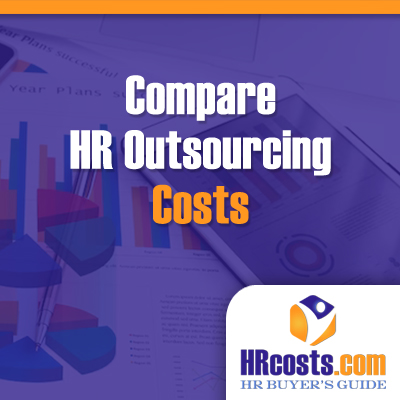
Payroll Outsourcing | Simplified Solutions For Any Business
Payroll Service Solutions for Small and Medium Sized Businesses
HRcosts.com helps streamline business with payroll outsourcing and online payroll services. From taxes, W-2s, to time and attendance, the guide will help you get where you’re going.
Simplified W-2s, Filing/Paying Taxes, Direct Deposits, and More
HR Outsourcing and payroll services can greatly simplify the management of W-2s, filing and paying taxes, and direct deposits for small and medium-sized businesses. By utilizing the expertise of an external provider, businesses can ensure accuracy and compliance when preparing and distributing W-2s to employees. These providers also stay up-to-date with tax regulations, ensuring timely and accurate tax filings and payments. Additionally, outsourcing payroll services enables businesses to offer direct deposit options for employees, streamlining the payment process and improving overall efficiency.
Payroll Management With 3rd Party Providers
In today’s competitive business environment, small and medium-sized businesses (SMBs) are constantly looking for ways to streamline processes, reduce costs, and optimize their resources. One of the key areas where SMBs often struggle is payroll management. This is where HR Outsourcing comes into the picture. HR Outsourcing is the practice of hiring a third-party provider to manage HR functions like payroll, benefits administration, and other HR-related tasks.

How SMB’s Leverage the Benefits of Outsourcing Payroll Services:
Cost Savings
One of the most significant benefits of HR Outsourcing is cost savings. Managing payroll in-house can be expensive, as it requires investing in payroll software, hiring dedicated staff, and maintaining compliance with ever-changing regulations. By outsourcing payroll, SMBs can save on these costs, as they only need to pay a fee to the service provider. This fee is typically based on the number of employees and the level of service required, making it a scalable solution for growing businesses.
Compliance and Risk Management
Staying up-to-date with local, state, and federal payroll regulations can be time-consuming and challenging, especially for SMBs that lack dedicated HR staff. Outsourcing payroll services ensures that businesses remain compliant with all relevant laws and regulations. HR service providers specialize in this area, constantly monitoring updates to tax laws, labor laws, and other regulations that may impact payroll management. By outsourcing, SMBs can avoid costly penalties and fines resulting from non-compliance.
Access to Expertise and Technology
HR Outsourcing providers have a wealth of expertise in payroll management, often employing a team of experienced payroll specialists. This means that SMBs can benefit from the knowledge and experience of payroll professionals without having to hire them in-house. Additionally, HR Outsourcing providers have access to state-of-the-art payroll software, which can help streamline the payroll process, reduce errors, and improve overall efficiency.
Time Savings
Payroll management can be a time-consuming process, particularly for SMBs without dedicated HR staff. By outsourcing this function, business owners and managers can free up valuable time to focus on other critical aspects of their business, such as growth and innovation. HR service providers can take care of tasks like calculating payroll, filing taxes, and managing employee benefits, allowing SMBs to concentrate on their core competencies.
Scalability
As businesses grow, their payroll needs often become more complex. HR Outsourcing allows for easy scalability, as service providers can accommodate fluctuations in employee numbers and payroll complexity. This means that as a business expands, it doesn’t need to invest in additional in-house resources or software. Instead, the HR Outsourcing provider can handle the increased workload, ensuring a seamless transition.
HR Outsourcing presents a comprehensive solution for small and medium-sized businesses seeking to manage payroll services more effectively. By leveraging the expertise and resources of an HR service provider, SMBs can save on costs, improve compliance, access advanced technology, and free up time for more strategic business pursuits. As a result, HR Outsourcing can help SMBs not only survive but thrive in today’s competitive business landscape.
Advantages vs Disadvantages of Payroll Outsourcing
Advantages of Payroll Outsourcing:
- Save Money: Outsourcing payroll can be more cost-effective than managing it in-house, as it eliminates the need for payroll software, dedicated staff, and other related expenses. Businesses pay a fee to the service provider based on the number of employees and level of service required.
- Mitigate Risks: Outsourcing providers stay up-to-date with federal, state, and local payroll regulations, ensuring that businesses remain compliant and avoid penalties or fines associated with non-compliance.
- Stay Up to Date: Payroll outsourcing providers have experienced professionals who specialize in payroll management, granting businesses access to valuable expertise. They also use advanced payroll software to improve efficiency and reduce errors.
- Time Management: Outsourcing payroll management frees up time for business owners and managers to focus on other aspects of their business, such as growth, innovation, and strategic planning.
- Adapts as Your Business Grows: As businesses grow and their payroll needs become more complex, outsourcing providers can accommodate fluctuations in employee numbers and payroll complexity, offering a seamless solution for expansion.

Disadvantages of Payroll Outsourcing:
- Less control: Outsourcing payroll can result in a perceived loss of control over sensitive financial information and employee data. Businesses must trust that the provider is handling their data securely and accurately.
- Communication challenges: Working with an external provider may lead to communication issues, particularly if the provider is located in a different time zone or if there are language barriers.
- Hidden costs: While outsourcing payroll can save money, some providers may charge additional fees for extra services or features. Businesses should carefully review contracts and fee structures to avoid unexpected expenses.
- Dependency on the service provider: Outsourcing payroll creates a dependency on the provider, which could be problematic if the provider experiences issues, such as technical difficulties or staff turnover.
- Data security concerns: Sharing sensitive financial and employee information with an external provider can raise data security concerns. Businesses must ensure that the provider has robust security measures in place to protect their data.
Payroll outsourcing offers several advantages, such as cost savings, compliance management, and time savings. However, businesses should also consider potential disadvantages, including loss of control and data security concerns. Weighing the pros and cons can help businesses determine if payroll outsourcing is the right solution for their needs.
FAQ’s
What is FICA?
FICA, or the Federal Insurance Contributions Act, is a U.S. federal law that mandates the collection of payroll taxes from both employees and employers. These taxes are used to fund two major social insurance programs: Social Security and Medicare.
Social Security provides financial support for retirees, disabled individuals, and surviving family members of deceased workers. Medicare, on the other hand, is a health insurance program primarily aimed at individuals aged 65 and older, as well as certain younger individuals with disabilities.
FICA taxes are split between the employee and employer, with each party contributing an equal amount. The FICA tax rate for Social Security was 15.3% (7.65% from the employee and 7.65% from the employer) on earned income up to a certain limit, called the Social Security wage base. The FICA tax rate for Medicare was 2.9% (1.45% from the employee and 1.45% from the employer) with no income limit.
What is the Most Common Payroll Frequency?
The most common payroll frequencies in the United States are weekly, biweekly, semimonthly, and monthly. Among these, biweekly payroll is the most common. Biweekly payroll means employees are paid every two weeks, resulting in a total of 26 pay periods per year. This frequency is popular because it offers a good balance between regular cash flow for employees and manageable administrative work for employers. However, the appropriate payroll frequency may vary depending on factors such as the nature of the business, local regulations, and industry norms.

Can I Track Employee Time?
Yes, many third-party payroll companies offer integrated time and attendance tracking services as part of their comprehensive payroll solutions. These services can help businesses efficiently monitor employee hours, manage overtime, and ensure accurate pay calculations.
Time tracking systems provided by payroll companies can include:
- Time clocks: These can be physical devices or web-based systems that employees use to clock in and out. Biometric time clocks, which use fingerprints or facial recognition, are also available to reduce the risk of time fraud.
- Mobile apps: Payroll companies may offer mobile applications that enable employees to clock in and out, request time off, and view their schedules from their smartphones, making it convenient for remote or field-based workers.
- Software integration: Time tracking systems can often be integrated with other software solutions, such as HR management systems, accounting software, and project management tools, streamlining data flow and reducing manual data entry.
- Reporting and analytics: Advanced time tracking systems may include reporting and analytics features that provide valuable insights into employee productivity, attendance trends, and labor costs.
By incorporating time and attendance tracking services, third-party payroll companies can simplify payroll processing, improve accuracy, and help businesses maintain compliance with labor regulations. It is essential to evaluate the specific features and capabilities of a payroll provider’s time-tracking solution to ensure it meets the unique requirements of your business.
How Complicated is the Implementation of Payroll Outsourcing?
The implementation of payroll outsourcing can vary in complexity depending on the size of the business, the level of customization required, and the specific payroll provider chosen. However, a well-planned and structured approach can streamline the implementation process. Here are the typical steps involved in implementing payroll outsourcing:
- Selecting a payroll provider: Research and compare different payroll outsourcing companies to find one that best meets your business’s needs, budget, and preferences. Consider factors such as the range of services offered, pricing structure, customer support, and reputation.
- Establishing communication: Assign a point of contact within your company to liaise with the payroll provider. This person will be responsible for coordinating the implementation process and addressing any questions or concerns that may arise.
- Data collection and migration: Gather all necessary employee and company information required for payroll processing, such as employee names, addresses, social security numbers, tax withholding information, and salary details. The payroll provider may require this data in a specific format, so ensure you follow their guidelines.
- System setup and customization: The payroll provider will set up and configure their system according to your business’s requirements. This may involve customizing pay schedules, deductions, accrual policies, and other aspects of the payroll process.
- Training and support: Many payroll providers offer training sessions and resources to help your team understand how to use the new system effectively. Take advantage of these resources to ensure a smooth transition.
- Parallel processing: During the initial implementation phase, it is a good idea to run parallel payrolls, which means processing payroll through both the old and new systems. This allows you to identify and address any discrepancies or issues before fully switching to the outsourced payroll system.
- Go-live: Once you are confident that the new system is accurate and reliable, fully transition to the outsourced payroll process. Continue to maintain open lines of communication with your payroll provider to address any questions or concerns that may arise.
While the implementation of payroll outsourcing can be somewhat complex, a well-organized approach and a reliable payroll provider can help ensure a smooth transition. Open communication, thorough preparation, and proper training are essential factors in successful implementation.
